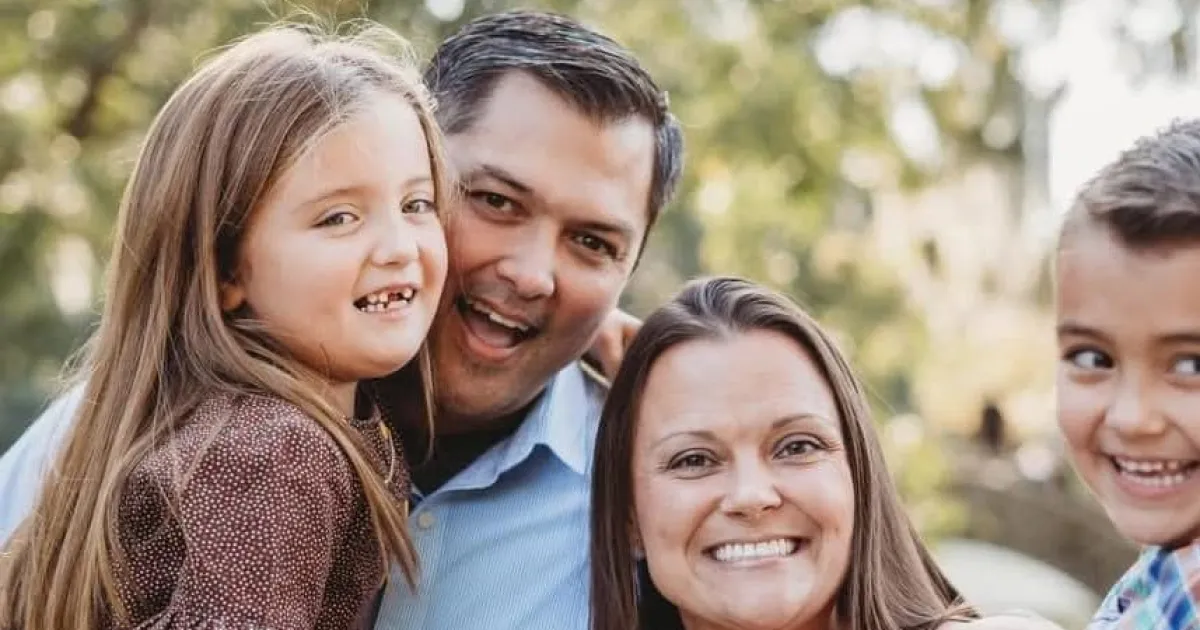AFib Awareness Month: Jonathon Frye’s Story Tells the Power of Early Action and Advanced Treatment

Jonathon Frye was sitting in his driveway when all of a sudden, his heart started to race.
“It felt like I was running a marathon,” the then 37-year-old recalled. “I went immediately to the emergency room, where I learned that — for the first time ever — my heart had gone into atrial fibrillation. One moment my heart rate was 151, and within seconds it would drop to 68.”
Atrial fibrillation, often known as AFib, is the most common cardiac arrhythmia, or irregular heartbeat. In the United States, the disease is on the rise, affecting more than 10 million Americans, according to recent research.
Symptoms of the disease include heart palpitations, fatigue, shortness of breath, difficulty exercising, anxiety, chest pain, and dizziness. AFib may feel like your heart is skipping a beat, fluttering, pounding, or beating too hard or fast.
That fast heartbeat, the symptom that led to Frye’s diagnosis and a nearly decade-long journey for not only answers but relief.
“Over the years, I went through several cardiovascular specialists, but none of them could figure out a permanent solution,” the father of two said.
Medications are the first line of treatment, but studies show seven in 10 patients do not find lasting relief from drugs alone. For many, the next step is cardiac catheter ablation, the leading technology available that offers a minimally invasive procedure endorsed by the American Heart Association, the American College of Cardiology, and the Heart Rhythm Society.
Using advanced mapping capabilities in systems like CARTO from Johnson & Johnson MedTech and the latest pulsed field ablation (PFA) technology, cardiac catheter ablation works by targeting and eliminating the faulty electrical signals in the heart that trigger AFib, restoring normal rhythm. Sometimes patients go home the same day, with recovery times measured in days rather than weeks.
Under the careful care of Dr. Dedric Clarke, a Cardiac Electrophysiologist in New Orleans, Frye underwent the cardiac ablation procedure.
“The procedure itself was quick and relatively uneventful. Recovery lasted about [seven] – [eight] days, with some tenderness and swelling that faded quickly, Frye explained. “Within [two] – [three] days I was back to normal tasks, and within [two] weeks — per doctor’s orders — I was cleared for exertion.”
Dr. Clarke has seen firsthand how this kind of technology benefits his patients and during AFib Awareness Month, he’s calling attention to the importance of taking action.
“The first way you improve access is by making people aware. Too often, people think they’re just slowing down with age, but more important than the what is the why, and AFib commonly is that why,” Dr. Clarke said. “The gap is getting people to understand what the disease is, listen to their bodies, and then take the next step to get help. The good news is there are electrophysiologists throughout the country who are willing, ready, and able to treat people once they come forward.”
Now in his 40s, Frye says his health is the best it’s been since his 20s and 30s, his energy levels are even rivaling those of his 8-year-old twins. And now, he’s using that energy to urge others to take control of their health.
“If you ever feel that something is off with your heartbeat, do not wait. Get checked. Untreated AFib dramatically increases the risk of severe and potentially fatal complications, including stroke and heart failure. Relief is possible — but only if you take that first step.”



